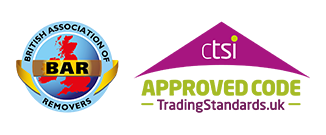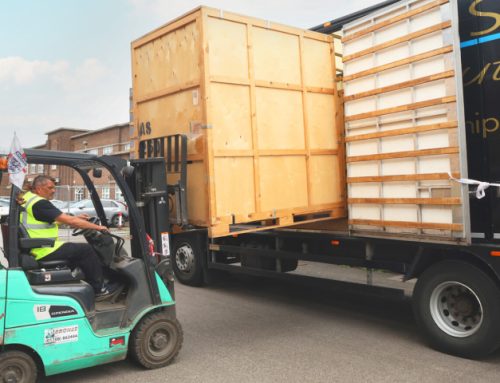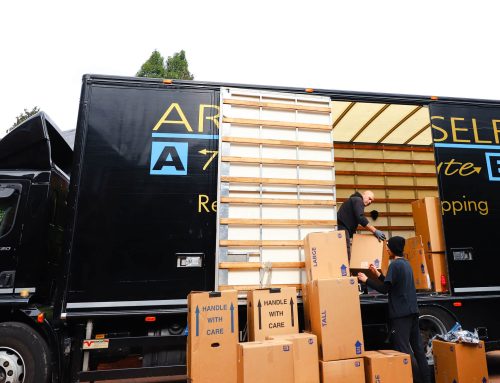Moving your office can feel like navigating a ship through a storm. It’s complex, filled with obstacles, and requires meticulous planning to ensure you reach your new destination successfully. Whether you’re scaling up to accommodate growth, scaling down for efficiency, or simply seeking a change of environment, the task involves more than just physical logistics. It’s about ensuring continuity, minimizing disruption, and capitalizing on the opportunity to rejuvenate your workspace and culture. But where do you begin? With the right strategies, a successful office relocation is not just a dream—it’s a highly achievable reality.
In this guide, we’ll walk you through the Best 5 Ways to Manage a Successful Office Relocation, specifically tailored for a UK audience. From creating a comprehensive office relocation checklist to ensuring a cost-effective move, we’ll cover everything you need to navigate this daunting process with confidence.
1. Craft Your Office Relocation Checklist
Start with a solid plan. The first step to any successful office move is to establish a detailed checklist with the assistance of professional office movers. This checklist should cover all bases, including timelines, budgeting, inventory lists, and roles and responsibilities. It’s not just a to-do list; it’s a strategic tool that ensures every aspect of your move is thoughtfully considered and accounted for, thanks to the expertise of your chosen movers.
- Inventory and needs assessment: Begin by taking stock of what you have and what you’ll need in your new office. It includes furniture, technology, and any special requirements unique to your business.
- Timeline and milestones: Set realistic deadlines for each phase of your move, from the initial planning stages to the day you officially open your new doors.
- Budgeting: Factor in costs for professional movers, any new furnishings or tech upgrades, and potential downtime. Remember, a Cost-Effective Office Move doesn’t mean cutting corners—it means making smart decisions that align value with necessity.
Embrace a Stress-Free Office Relocation
Moving office is notoriously stressful, but it doesn’t have to be. The key to a Stress-Free Office Relocation lies in early and thorough planning, clear communication, and the right support.
- Communication is king: Keep your team informed and involved. Regular updates and open channels for feedback can alleviate anxiety and make everyone feel part of the process.
- Professional movers: Don’t underestimate the value of experienced Office Movers. Choosing the right professionals can make all the difference, turning potential chaos into a structured, orderly transition.
2. Choosing the Right Office Movers
The significance of selecting proficient movers cannot be overstated. How to Choose Office Movers is more than a question of cost; it’s about reliability, experience, and the range of services they offer.
- Research and recommendations: Look for movers with excellent reviews and solid recommendations. Experience in office relocations specifically is a must.
- Services offered: Do they provide packing and unpacking? Will they help with setting up your new office layout? Comprehensive services can significantly ease your move.
3. Maintain a Detailed Office Relocation Timeline
One of the most crucial aspects of a seamless office move is adhering to a well-structured timeline. An Office Relocation Timeline is your roadmap, detailing every step of the process from start to finish. Here’s how to keep your move on track:
- Early Planning: Begin planning your move at least 6 months in advance. It gives you ample time to address unforeseen challenges without rushing decisions.
- Key Milestones: Break down the move into key phases, such as planning, packing, moving day, and unpacking. Assign realistic deadlines to each phase.
- Flexibility: While it’s important to stick to your timeline, be prepared for adjustments. Flexibility is key to handling unexpected delays or issues.
Creating and following a detailed timeline ensures that every task is completed in an orderly fashion, minimizing downtime and allowing for a smoother transition to your new office space.
4. Engage with Your Team for a Collective Effort
An office move isn’t just about relocating physical items; it’s about moving people. Engaging with your team and involving them in the process not only eases the transition but can also boost morale and productivity. Here’s how to ensure your team is on board:
- Assign Roles: Make your office relocation a team effort by assigning roles and responsibilities. That could range from overseeing the packing of specific departments to managing IT setup in the new location.
- Regular Updates: Keep the lines of communication open. Regular meetings or updates regarding the move can help address any concerns and keep everyone informed.
- Welcome Input: Encourage your team to share their ideas and suggestions for the new office, including workspace layout, decor, or even location preferences.
By fostering a collaborative environment, you not only leverage the collective expertise and creativity of your team but also make them feel valued and involved in the company’s future.
5. Prioritize Setup and Operational Continuity in Your New Office
The final stretch of your office relocation is setting up your new space and ensuring operational continuity. This phase is critical to resuming business activities with minimal disruption. Here’s what to focus on:
- IT and Infrastructure Setup: Prioritize the setup of your IT infrastructure to ensure business operations can resume as quickly as possible. That includes internet access, network setup, and phone lines.
- Furniture and Workspace Arrangement: Arrange your new office space in a way that enhances productivity and employee well-being. Consider ergonomic furniture and collaborative spaces.
- Trial Run: Before officially reopening, conduct a trial run to identify and resolve any operational issues. It can include testing IT systems, emergency procedures, and general workflow within the new space.
Conclusion
Navigating through an office relocation can be as challenging as it is exciting. However, with the strategies we’ve outlined – from crafting a comprehensive Office Relocation Checklist to ensuring operational continuity from day one in your new office – the process can be streamlined and stress-free. At Arnold & Self, we understand the complexities involved in moving your business. Our expertise and services are tailored to support each step of your relocation journey, ensuring a successful transition that aligns with your unique needs.
Reach out to Arnold & Self today, and let’s make your next move your best move.



 020 8401 8778
020 8401 8778 





